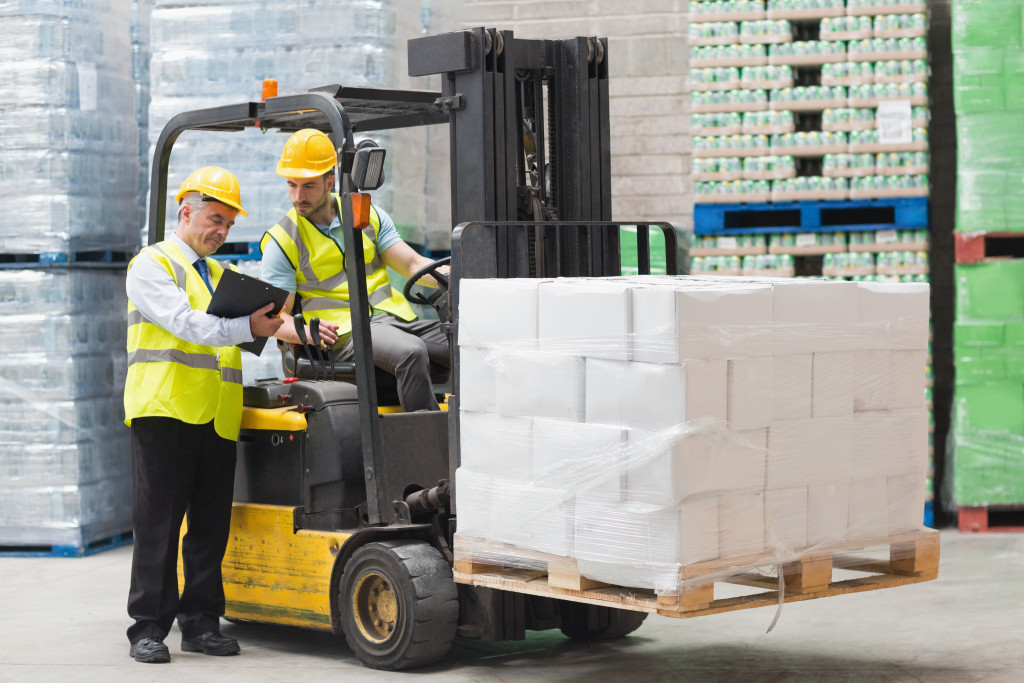Warehouses are a vital part of a business. They store goods and materials and distribute them to stores that we all visit regularly. The work is often dangerous, and many warehouse workers suffer injuries or even death due to the hazardous conditions in these buildings.
Because of this, managers need to know best how to keep their employees safe inside the facility. This article will discuss some basic practices for managing safety in warehouses.
Form A Committee
It’s important to have staff members’ input when it comes to safety in a warehouse. They can offer ideas and solutions that management may not have thought of, which could help prevent future injuries.
A good place to start is creating a health and safety committee with representatives from each department. This committee can be a resource for managers and ensure that the company follows OSHA requirements for safety practices.
Create A Plan For Safety Hazards
It’s important to know how to handle possible hazards in a warehouse before they arise. This includes understanding procedures for incidents involving machinery, electricity, chemicals, heat, etc.
It also involves knowing how to respond if an accident or injury occurs. Workers should not handle emergencies by themselves; they need to know the proper procedures and who to call for help.
Managers should create a plan that they can follow in case of any incident, including how employees will get help and where first-aid kits should be located. They should also make sure that employees know what to do in an emergency.
Hire The Proper Staff
Warehouses can be dangerous places, and not all managers know how to handle emergencies. That is why it’s important to hire people who will put safety first while on the job.
Employees should be dedicated enough to work safely so that their co-workers don’t have to suffer because of them. When choosing employees, it’s best to think about who could be a good fit for the warehouse. Would they be willing to go above and beyond when it comes to safety? If so, they are probably the best candidates for the job.
Train Employees
Employees should be well-trained in the procedures for working safely in the warehouse, and managers should make sure that they understand these rules before they begin their work. It includes following OSHA rules for sanitation, practices for safe rigging, checking equipment to ensure proper function, etc.
Regular safety training is beneficial for both managers and workers; it can help prevent accidents and injuries in the warehouse environment.
Make it Clear That Safety Is Important
More than likely, employees do not want to be injured while working in a warehouse because the work is often difficult and strenuous. However, accidents can happen even when people are careful about doing.
Managers should make safety clear during job interviews; if prospective workers know that it is a high priority and can even be a deciding factor, they will work with greater care.
The manager’s behavior should also reflect safety practices. If they are careless about what they’re doing, why would the rest of the staff feel like their own safety matters? They need to see that managers are committed to preventing injuries and willing to do all they can.
Make Sure Workers Feel Safe

It’s not just about what managers are doing or saying; it’s also important for the rest of the staff to feel safe on the job. If workers feel like their safety doesn’t matter, accidents will happen because employees won’t follow safety procedures.
Warehouse managers need to make sure their workers feel valued and respected. Managers should ask for employee feedback about what they’d like to see happen with safety and take the suggestions seriously.
Workers should also voice concerns without fear of being taken off a project or losing their job. The more open the communication is about safety, the more likely you will prevent accidents.
Understand OSHA Requirements
Managers need to know what the latest safety requirements are to make sure their warehouse operations follow all of them. It helps keep workers safe and prevents injuries from occurring due to noncompliance.
OSHA has updated its rules and regulations on several occasions. Managers need to know what those changes are and ensure that their operations reflect them, whether it means installing new equipment or changing procedures for certain tasks.
Warehouse managers need to be diligent in their safety practices to keep their workers safe. By hiring the right staff, training employees, and making it clear that safety is a priority, they can create a safe working environment for everyone. Managers should also be familiar with OSHA requirements and ensure that their warehouse operations follow all of them.

